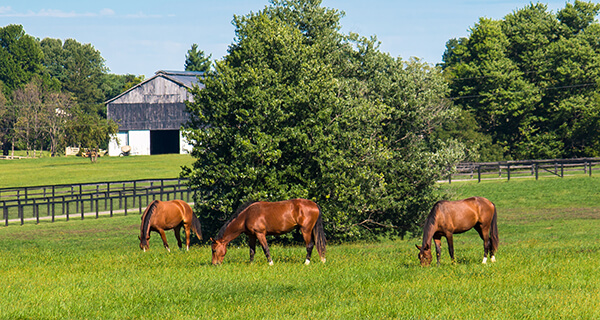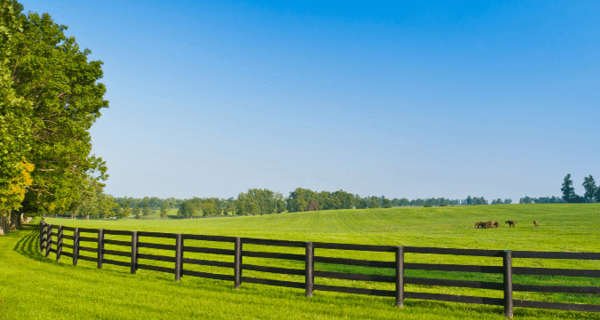By Jen Shah, CPA · Equine Industry Team Leader
Federal tax reform is upon us and, while most provisions in the current bill are effective for calendar years beginning in 2018, there may be some year-end planning items that horse and farm owners should consider prior to December 31, 2017.
As I am writing this article, both the Senate and the House have passed (and re-passed) the current bill and it is widely expected to be signed into law by the President today. While Dean Dorton has previously provided general information regarding what is included in this bill, this article addresses selected items that are specific to horse and farm owners. Unless otherwise noted, the bill is effective for years beginning after December 31, 2017 (so, 2018 for calendar year filers). Most of these provisions apply for a period of time and then revert back to current treatment, but this article focuses on when these items become effective versus the time period for which they are effective.
Depreciation Provisions
Under current law, bonus depreciation (50%) may be claimed on new tangible property purchased and placed in service. The current bill increases the amount eligible to be immediately expensed to 100% of the purchase price and expands the definition of new to include the taxpayer’s first use of the property. So, if I purchase a broodmare, I may now expense 100% of her purchase price, as long as I had not previously owned her. Yearlings, racing prospects, farm equipment and office equipment, land improvements, and barns, to name a few, continue to qualify for this write-off as long as they have not been owned previously by the purchaser. This provision is effective for assets purchased after September 27, 2017.
Increased Section 179 depreciation of $1,000,000 on up to $2,500,000 of qualifying purchases is included with this bill. The bill also expands the definition of qualified property to include HVACs. As a reminder, in order to claim Section 179, there needs to be a net business profit. This is calculated first at the pass-through entity level and then again at the individual level.
Those in the farming business have been required to use 150% declining balance versus the standard 200% declining balance for federal depreciation. This bill removes the requirement to use 150% declining balance so 200% declining balance may be used going forward, which will accelerate depreciation deductions in the first few years. In addition, farm equipment that is currently seven-year life property becomes five-year life property so may be written off over a shorter period of time.
The three-year recovery period for depreciation on yearlings is not included in this bill. So, while the three-year recovery period still applies to racehorses when placed in service after the two-year anniversary of the foaling date, yearlings revert back to a seven-year recovery period. This is effective for years beginning after December 31, 2016, so make sure to update 2017 federal depreciation for this.
Federal Income Tax Rate Provisions
The top income tax rate for individuals will be 37% (versus 39.6% currently). For those who conduct horse operations via partnerships, S corporations, or sole proprietorships, there is a new 20% deduction available against qualified business income but there are many limitations and hurdles to meet in order to qualify for this deduction. This 20% deduction does not reduce an individual’s adjusted gross income but is a reduction from taxable income. Trusts and estates may also qualify for this deduction.
This 20% deduction is limited to the greater of 50% of the allocable portion of wages paid by the business or the sum of 25% of allocable wages plus 2.5% of the allocable unadjusted basis of all qualified property immediately after acquisition. Non-corporate taxpayers with taxable income of less than $157,500 ($315,000 if married filing jointly) are not subject to the W-2 wage limitation when calculating this 20% deduction. For those that exceed this threshold, there may be a potential to qualify for this deduction even if wages are not paid by the entity but depreciable property (like buildings, horses, equipment, et cetera) is held in a trade or business or for the production of income. This portion of the calculation is confusing in the current bill so the above is a bit of an over-simplification.
This 20% deduction generally does not apply to specified service businesses (like accountants or where the principal asset is the reputation or skill of one or more of its employees or owners), but the service business limitation does not apply in the case of a taxpayer whose taxable income does not exceed the applicable thresholds above. As such, bloodstock agents, sales agents, trainers, and vets may fall under the service business limitations.
If you conduct your horse activities via a C corporation, the corporate income tax rate will decrease to 21% and the alternative minimum tax will be eliminated, both of which are good news.
Business Operational Provisions
Business interest expense will continue to be fully deductible for the bulk of industry participants. If average annual gross receipts for the three prior years exceed $25,000,000, then interest expense is limited to 30% of a business’ taxable income, with the excess carrying over to subsequent years. Farming businesses may elect not to be subject to the business interest limitation but would then be required to use Alternative Depreciation System (ADS) (straight-line and longer life) to depreciate property.
Like-kind exchanges of horses, vehicles, and farm equipment are eliminated. Like-kind exchange treatment is only available for real estate going forward, so this will reduce the opportunity for horse and farm owners to defer gain recognition on assets other than real estate for which the proceeds are re-invested in like property.
Meals provided to employees for the convenience of the employer (typically done during peak sale or breeding season hours) are currently 100% deductible but will become 50% deductible. Entertainment expenses will no longer be deductible.
Net Federal Income Tax Losses Generated by Active Businesses
Lastly, this next provision affects active business owners so will affect more than just the equine industry but may have a detrimental effect for those horse and farm owners that generate business losses which are offset by non-business income such as investment income. Under current law, excess farming losses are only limited if the farm receives a subsidy, which does not apply to many horse farm owners. Under this bill, a new section limits any excess business loss generated by an individual to ($250,000) (or ($500,000) if married filing jointly). This threshold applies after the active participation rules are applied and includes any trade or business, not just farming.
Business activities may be netted on an individual’s income tax return to determine if the loss threshold has been exceeded. Any excess business loss beyond the above threshold becomes a net operating loss that rolls forward into the subsequent year. Given the accelerated deductions available to horse owners in years prior to the potential to generate income, quite often net taxable losses will be reported, especially in start-up years. This provision has the effect of at least a one-year deferral for these excess business losses and may negatively impact those who fund business operations with assets that generate investment income.
So, while this bill is primarily effective post-2017, what are some items that should be considered prior to December 31, 2017?
- Consider accelerating expenses into 2017 for active businesses owned by individuals. There should be a non-tax reason for doing so (for example, discount available, accessibility to certain stallions solely as a result of prepayment, et cetera).
- Calculate the 2017 versus 2018 income tax impact of accelerating income for individuals into 2017 and paying the related state and local taxes (since the deduction for state and local taxes is limited to $10,000 after 2017) by year-end.
- Determine if 2017 state, local, real estate, and/or sales tax should be paid by individuals not in Alternative Minimum Tax (AMT) prior to December 31, 2017. Note that there is no deduction allowed in 2017 for the prepayment of 2018 taxes.
- If the horse or farm owner makes contributions to charity in exchange for preferred seating at athletic events (like the University of Kentucky’s K Fund), consider paying now. Currently, a charitable deduction for 80% of the amount contributed is allowed but this will be eliminated in future years.
This proposed bill certainly does not accomplish income tax simplification (and some have indicated that this will keep us tax accountants in business for quite some time) and creates many gray areas subject to interpretation without the existence of additional regulations. We are doing our best to interpret this bill as we understand it but know that we plan to send updates as additional clarifications are released in 2018.
Should you have any questions regarding federal tax reform and its potential impact on your 2017 or 2018 equine operations, please do not hesitate to contact us.
Jen Shah, CPA
Director of Tax Services
Equine Industry Team Leader
View Jen’s Bio







